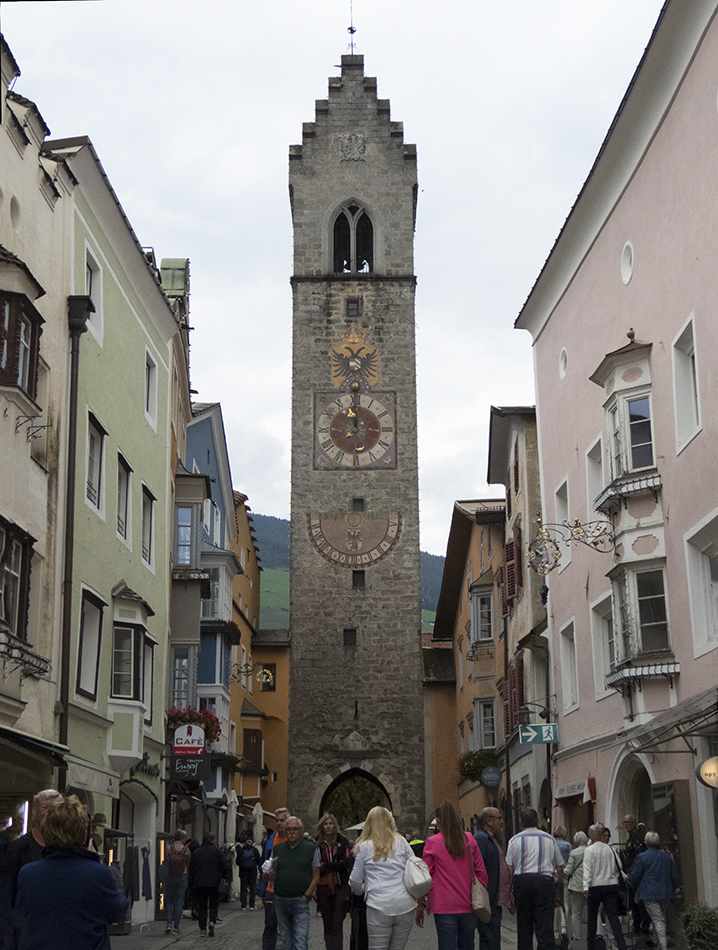
Although time and its measurement is a fundamental component of human life, a special type of clock which takes matters to the next level is the so-called
astronomical clock and whose purpose is not to measure time per se but to convey astronomical information and, in particular, the relative position of the
Sun and Moon as well as the zodiacal constellations and, in some cases, the position of the planets all as a function of time.
The oldest such effort to effectively emulate the overhead celestial sphere (ie a mini-planetarium) is the
Antikythera Mechanism which was discovered in 1901 totally by
accident by sponge divers off the coast of the Greek island of Antikythera. It has been dated to approximately 80 BC and it is believed to be the work of
Poseidonius of Rhodes. The Antikythera Mechanism is currently on display
at the National Archaeological Museum in Athens, Greece.
Note: Travel to northern Italy and as one approaches the Austrian border will reveal many towns which are bilingual with both
Italian and German in common use and including road signs, adverting posters and descriptive plaques to public buildings and areas. Two such examples are
the towns of Vipiteno and Merano which lie less than 10 km and 40 kilometers from the Austrian border, respectively, and are part of the autonomous region
of South Tyrol. As one approaches both of these cities, huge areas of land filled with apple orchards and vineyards will become evident while at the same
time stunning mountain ranges in excess of 3000 meters in height surround the valley.
Torre delle Dodici (Tower of Twelve) is a 46-meter tall tower (Gothic style) made of granite and constructed between 1468 and 1472. It marks the primary
town passage when Vipiteno experienced rapid growth due to a nearby silver mine with the tower now seggragating the old and new town of Vipiteno. Following
a destructive fire in 1867 to the tower's spire, a stepped gable was put in its place. The clock itself is quite simplistic in design using a 12-hr system
with a pair of bronze pendants indicating the time of day. However, key elements which characterize astronomical clocks such as the constellations, the
age of the moon and the planets are seemingly absent. The globe with a starry background above the clock may indicate day or night with the lower dial the
time during the 12-hr day or night portion where the sunrise to sunset period is suggested by the numbering sequence of VI (sunrise) to XII (noon) and on
to V (sunset) and vice versa for the 12-hr night sequence where the respective hours would indicate sunset (VI), midnight (XXII) and sunrise (V) (albeit
redundant to the clock showing the explicit time of day). An alternate interpretation may be that the globe is simply an indication of the phase of the Moon.
Note: For a view of the astronomical clock using greater focal length, please click
here and
here.
Note: For additional results involving astronomical clocks from around the world, please click
here.
|
Body: Sun Mass: 332,900 x Earth Mass Eq Diameter: 109.1 x Earth Distance: 149 million km RA / Dec: 23h 41m 41s / +89° 19' 51" Diameter: 32.16' Magnitude: -26.8 |
 |
Date: Sept 13, 2023 Location: Piazza Citta, Vipiteno, Italy Equipment: Canon PowerShot SX60 HS @ 8.63 mm / f4.5 Exposure: 1 x 1/800 sec ISO 400 RAW Image Format 4768x3516 Image Size Continuous Servo Mode Manual Mode Software: Photoshop CS6 Processing: Brightness/Contrast Resampling JPG Compression |